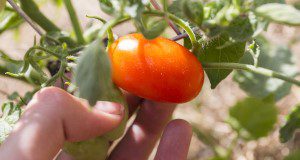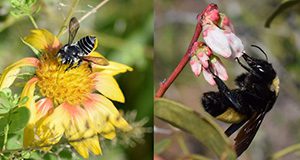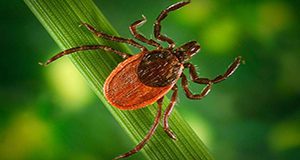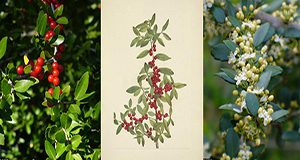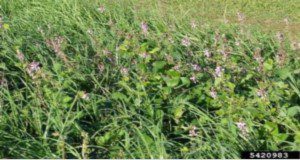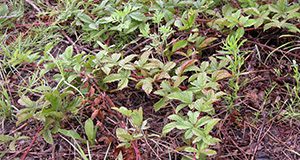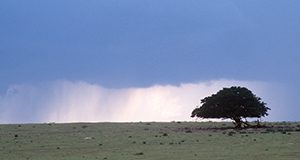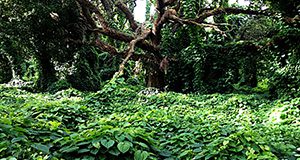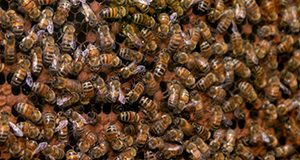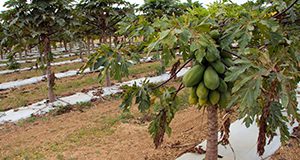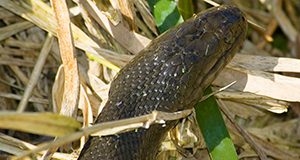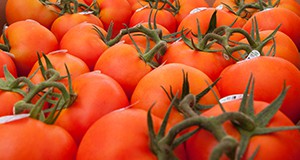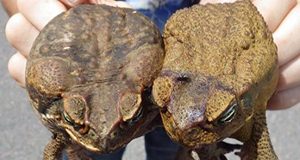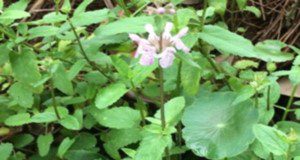Este documento provee un panorama básico de los factores más importantes al diseñar. Written by Haimanote K. Bayabil, Kati W. Migliaccio, Michael Dukes, Laura Vasquez, and Carlos Balerdi, and published by the UF/IFAS Department of Agricultural and Biological Engineering, December 2020.
https://edis.ifas.ufl.edu/ae549
Constructing a Southwest Florida Tomato Enterprise Budget
Enterprise budgets are effective planning tools for growers in search of help with forecasting, resource coordination, and better production decisions. In essence, enterprise budgets can help producers determine what to produce, how many acres to produce, the cost of production, and the necessary price to be profitable. This 5-page fact sheet written by Tara Wade, Barbara Hyman, Eugene McAvoy, and John VanSickle and published by the UF/IFAS Food and Resource Economics Department describes the process used to create the 2017/18 enterprise budget for tomatoes in southwest Florida and includes resources for producers interested in creating enterprise budgets for their own operations.
https://edis.ifas.ufl.edu/fe1087
Bees of Florida
Did you know there are over 320 species of bees in Florida and over 4,000 in the United States? Wild bees vary widely in behavior, color, size, and shape. Written by James R. Weaver, Shiala M. Naranjo, Emily Noordyke, and Rachel E. Mallinger and published by the UF/IFAS Entomology and Nematology Department, Bees of Florida is a two-page pdf guide to some common bee groups and species you may encounter in Florida.
https://edis.ifas.ufl.edu/in1285
Facts about Wildlife Diseases: Ehrlichiosis
Ehrlichiosis is a bacterial disease that is transmitted to humans and animals from ticks. In most cases, symptoms are mild, but sometimes if antibiotic treatment is delayed, it can cause severe illness and even death. In Florida, ehrlichiosis is an emerging disease. The hotspot of transmission is in north central Florida, but the disease is underdiagnosed. This 4-page fact sheet written by Yasmin Tavares and Samantha Wisely and published by the UF/IFAS Department of Wildlife Ecology and Conservation describes ehrlichiosis and explains how it is transmitted, how to know if you have it, and how to prevent yourself and your friends and family from getting it.
https://edis.ifas.ufl.edu/uw481
Yaupon Holly Culture and Pest Management for Tea Production and Ornamental Use
Yaupon holly, Ilex vomitoria Aiton, is an evergreen woody plant native to the southeastern United States. The species is widely used as a landscape ornamental plant because it tolerates a wide range of soil and environmental conditions, is available in various forms, and attracts wildlife, especially native birds. Recently, there has been a resurgence of interest in cultivating the plant for the caffeinated beverages that can be made from its leaves. This 8-page fact sheet written by Matthew A. Borden, Mark A. Wilhelm, and Adam G. Dale and published by the UF/IFAS Entomology and Nematology Department provides a guide to managing yaupon holly and protecting it from pests. It will be useful to both commercial growers and homeowners interested in growing this beautiful and useful plant.
https://edis.ifas.ufl.edu/in1299
Biology and Management of Creeping Beggarweed (Desmodium incanum) in Warm-Season Turf
Creeping beggarweed is a common perennial broadleaf weed in Florida landscapes, home gardens, pastures, and other agricultural production systems. This new 6-page article is written for green industry professionals and others to help aid in the identification and management of creeping beggarweed in landscape turf and planting beds. Written by Grantly Ricketts and Chris Marble, and published by the UF/IFAS Environmental Horticulture Department.
https://edis.ifas.ufl.edu/ep591
Blackberry and Dewberry: Biology and Control
Blackberry and dewberry are often viewed as nuisance weeds that reduce grazing in a portion of the pasture. However, severe financial losses can occur if these growing thickets injure cattle. This 4-page document provides information regarding blackberry and dewberry management in pastures. Written by Brent Sellers, Pratap Devkota, and Jason Ferrell, and published by the UF/IFAS Agronomy Department, revised November 2020.
https://edis.ifas.ufl.edu/ag238
How to Structure Data from an IoT Monitoring Network
The Internet of Things, or IoT, refers to the billions of physical devices that collect and share data through the Internet. This 5-page publication discusses the typical attributes in IoT monitoring networks and presents a data structure that outlines best practices in organizing data. Written by Ziwen Yu, and published by the UF/IFAS Department of Agricultural and Biological Engineering, November 2020.
https://edis.ifas.ufl.edu/ae548
How Is Our Future Climate Projected?
Climate is the long-term patterns and fluctuations in air and moisture. This 5-page article explains how future climate is projected using mathematical models and introduces common scientific terms used when discussing climate change. Written by Young Gu Her, Zachary Brym, Ashley Smyth, and Elias Bassil, and published by the UF/IFAS Department of Agricultural and Biological Engineering, November 2020.
https://edis.ifas.ufl.edu/ae546
¿Perdidos en la maleza? Una guia exhaustiva de malas hierbas no autoctonas en Florida
Este artículo tiene como objetivo informar al público en general, administradores de tierras, investigadores, autoridades locales y estatales, y a todo aquel que busque orientación para acceder a listados de plantas no autóctonas en el estado de Florida, tanto normativos como no normativos. En este documento se explica el origen de las listas, el significado de la inclusión en una lista en concreto y la forma de acceder a cada una de ellas. Written by Deah Lieurance, Lyn A. Gettys, and Germán Sandoya-Miranda, and published by the UF/IFAS Agronomy Department, November 2020.
https://edis.ifas.ufl.edu/ag444
Pintoi Peanut: A Seed-Propagated Perennial Peanut Forage Option for Florida
Because of its adaptability to Florida's environmental conditions and ability to produce viable seeds, pintoi peanut represents an interesting forage alternative for cow-calf producers in the state. This 5-page document provides current information on pintoi peanut for forage and livestock producers in Florida. Written by Joao M. D. Sanchez, Joao Vendramini, Maria L. Silveira, Jose C. B. Dubeux Jr., Lynn E. Sollenberger, and Philipe Moriel, and published by the UF/IFAS Agronomy Department, November 2020.
https://edis.ifas.ufl.edu/ag445
Best Management Practices for Live Bee Removals in Florida: A Beekeeper’s Guide
Feral colonies of honey bees nesting near humans or domestic animals can pose a stinging threat and may be considered a nuisance and possibly a threat to animal or public health, and therefore bees often need to be removed or eradicated when they are found nesting near homes or other property. This 14-page guide written by Mary Bammer, Jamie Ellis, Eric Baxter, Krista Butler, John Coldwell, B. Keith Councell, Kevin Easton, Brendhan Horne, Brandi Stanford, and Amy T. Vu and published by the UF/IFAS Entomology and Nematology Department details best management practices for live bee removals and serves as a reference for beekeepers who choose to perform live bee removal services in Florida.
https://edis.ifas.ufl.edu/in1297
Container Mosquito Habitat Community Cleanup: A How-To Guide for Event Organization
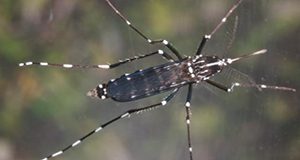
Being bitten by the container mosquitoes Aedes aegypti and Ae. albopictus means a higher risk of becoming infected with Zika, dengue, or chikungunya virus. Container mosquitoes develop in the water that collects in discarded tires, jars, cans, buckets, and boats. The best way to prevent irritating bites and dangerous mosquito-transmitted illnesses is to get rid of all trash that holds water. This 6-page fact sheet written by Amy Hallock, Eva A. Buckner, Ricky W. Telg, and Alena R. Poulin and published by the UF/IFAS Entomology and Nematology Department is packed with recommendations that will help you to successfully develop and host a cleanup event to reduce potential mosquito larval habitats in your community and keep yourself and your neighbors safe.
https://edis.ifas.ufl.edu/in1286
Sampling Guidelines and Recommendations for Submitting Samples for Diagnosing Laurel Wilt in Avocado Trees (Persea americana L.)
Laurel wilt (LW) is a vascular disease caused by a fungal pathogen transmitted to avocado trees by several ambrosia beetle species and through root grafts among adjacent avocado trees. A critical part of preventing and controlling plant diseases is determining the causal agent so that the appropriate management practices can be implemented to eradicate or contain the outbreak. Proper sampling is a critical step in disease diagnosis and in the determination of the causal agent of disease. This new 3-page publication of the UF/IFAS Horticultural Sciences Department was written by Jonathan Crane, Romina Gazis, Jeff Wasielewski, Daniel Carrillo, Bruce Schaffer, Fredy Ballen, and Edward Evans.
https://edis.ifas.ufl.edu/hs1394
Programacion de Riego Basado en el Metodo de Evapotranspiracion Para Papaya (Carica papaya) en Florida
La papaya es un importante cultivo frutícola que se cultiva en el sur de Florida con un área estimada de 356 acres. Este documento se centra en las técnicas de programación de riego basadas en ET para la papaya en las condiciones de Florida. Written by Haimanote K. Bayabil, Jonathan H. Crane, Kati W. Migliaccio, Yuncong Li, Fredy Ballen, and Sandra Guzmán, and published by the UF/IFAS Department of Agricultural and Biological Engineering, November 2020.
https://edis.ifas.ufl.edu/ae547
Eastern Indigo Snake
Learn more about eastern indigo snakes!
The Wildlife of Florida Factsheet series was created to provide the public with a quick, accurate introduction to Florida's wildlife, including both native and invasive species. Authors Tyler Buckley and Raoul K. Boughton hope this 2-page quick guide and others in the series published by the UF/IFAS Department of Wildlife Ecology and Conservation will inspire readers to investigate wildlife in their own backyards and communities and understand the amazing biodiversity of wildlife in the state of Florida.
https://edis.ifas.ufl.edu/uw475
Tomato Brown Rugose Fruit Virus (ToBRFV): A Potential Threat for Tomato Production in Florida
Tobamoviruses are mechanically transmitted plant viruses that cause severe economic damage to vegetable and ornamental crops in Florida and worldwide. While certain tomato cultivars have genetic resistance to the most common tobamoviruses, no commercial tomato cultivars are resistant to tomato brown rugose fruit virus (ToBRFV), a recently described tobamovirus that also infects pepper and eggplant. It is currently unknown how ToBRFV may affect tomato production in Florida. This new 5-page publication of the UF/IFAS Plant Pathology Department describes symptoms of the virus, how it is different from other tobamoviruses, and how it is transmitted, as well as what to do if you think you have ToBRFV in your field. Written by Ozgur Batuman, Salih Yilmaz, Pamela Roberts, Eugene McAvoy, Samuel Hutton, Kishore Dey, and Scott Adkins.
https://edis.ifas.ufl.edu/pp360
El sapo de caña o “Bufo” (Rhinella marina) en Florida
El sapo de caña (Rhinella marina), a veces conocido como el “bufo”, sapo gigante o marino, es nativo del extremo sur de Texas, México, América Central y la zona tropical de la América del Sur, pero está establecido en Florida. Los sapos de caña se introdujeron inicialmente en Florida como un método de control biológico de plagas en la década de 1930. Se suponía que los sapos comieran escarabajos que amenazaran el cultivo de la caña de azúcar, pero la población introducida no sobrevivió. This 7-page fact sheet written by S. A. Johnson, A. Wilson, and Armando J. Ubeda and published by the UF/IFAS Department of Wildlife Ecology and Conservation is the Spanish translation of The Cane or “Bufo” Toad (Rhinella marina) in Florida.
https:edis.ifas.ufl.edu/uw477
The Life of Lichen
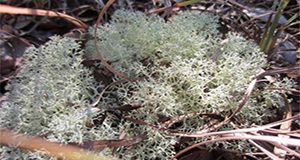
Lichen represent a fascinating combination of organisms working together to form some familiar and unfamiliar growths on a variety of substrates. This 6-page fact sheet written by James Stevenson, Lara B. Milligan, and Jennifer L. Gillett-Kaufman and published by the UF/IFAS Entomology and Nematology Department defines and explains these organisms.
https://edis.ifas.ufl.edu/in1296
Biology and Management of Florida Betony (Stachys floridana) in Ornamental Plants in Landscape Planting Beds
Florida betony (Stachys floridana) is a perennial weed in Florida landscape planting beds, gardens, turfgrass, and agricultural production systems. This new 4-page article is written for green industry professionals and others to aid in the identification and management of Florida betony in and around ornamental plants in landscape planting beds. Written by Thomas Smith and Chris Marble, and published by the UF/IFAS Environmental Horticulture Department.
https://edis.ifas.ufl.edu/ep597

